Japanese Traditional Quotes & Sayings
Enjoy reading and share 27 famous quotes about Japanese Traditional with everyone.
Top Japanese Traditional Quotes

Beautiful and minimalist, the traditional Japanese art of ikebana - arranging bouquets of cut flowers and leaves using very few elements - ideally corresponded to a form of expression I could transpose in a perfume. The smell of a rose early in the morning, damp, sprinkled with dew, delicate and light. — Jean-Claude Ellena

Zen is to religion what a Japanese "rock garden" is to a garden. Zen knows no god, no afterlife, no good and no evil, as the rock-garden knows no flowers, herbs or shrubs. It has no doctrine or holy writ: its teaching is transmitted mainly in the form of parables as ambiguous as the pebbles in the rock-garden which symbolise now a mountain, now a fleeting tiger. When a disciple asks "What is Zen?", the master's traditional answer is "Three pounds of flax" or "A decaying noodle" or "A toilet stick" or a whack on the pupil's head. — Arthur Koestler

If you go to Tokyo, I think it becomes very obvious that there's this almost seamless mixture of popular culture and Japanese traditional culture. — Kazuo Ishiguro

The Emperor and his ministers might dance Western dances and even, in violation of traditional Japanese propriety, smile Western smiles. But their underlying and deadly earnest aim was always to wipe the smiles off European faces. — Niall Ferguson

I think that the Japanese culture is one of the very few cultures left that is its own entity. They're just so traditional and so specific in their ways. It's kind of untouched, it's not Americanized. — Toni Collette
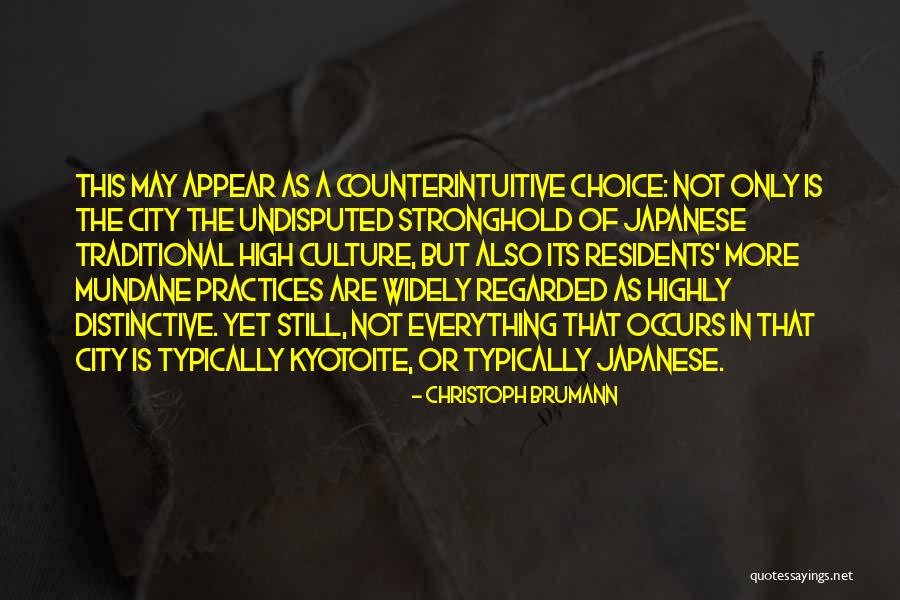
This may appear as a counterintuitive choice: not only is the city the undisputed stronghold of Japanese traditional high culture, but also its residents' more mundane practices are widely regarded as highly distinctive. Yet still, not everything that occurs in that city is typically Kyotoite, or typically Japanese. — Christoph Brumann

some Japanese philosophers have been eager to graft the newly introduced discipline of western academic philosophy onto its premodern Japanese antecedents. The conflict with traditional values proposed a whole host of new questions: Can one articulate an original yet comprehensive epistemology that would give western empiricism and logic an appropriate place but subordinate it to a dominant "Asian" basis for thought and values? Can one develop a viable ethics that places agency in a socially interdependent, rather than isolated and discrete, individual? Can one construct an interpretation of artistry based in a mode of responsiveness that is also the ground for knowledge and moral conduct? Can one envision a political theory of the state that allows for personal expression without assuming a radical individualism? Along with these fundamental issues, a great deal of attention was devoted to a still more basic question: What is culture and what affect does it have on philosophizing? — James W. Heisig

We recognize the distinctness of Asian art when we turn to its traditional forms, recognize it as Japanese, Chinese and Indian, even Balinese or Thai. — F. Sionil Jose

I often look ridiculous in Japan. There's really no way to eat in Japan, particularly kaiseki in a traditional ryokan, without offending the Japanese horribly. Every gesture, every movement is just so atrociously wrong, and the more I try, the more hilarious it is. — Anthony Bourdain
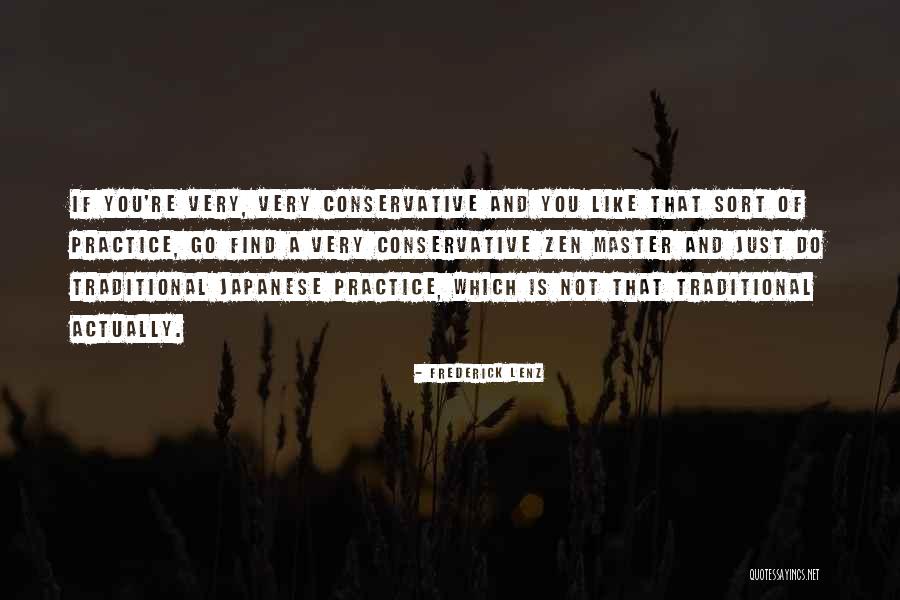
If you're very, very conservative and you like that sort of practice, go find a very conservative Zen master and just do traditional Japanese practice, which is not that traditional actually. — Frederick Lenz
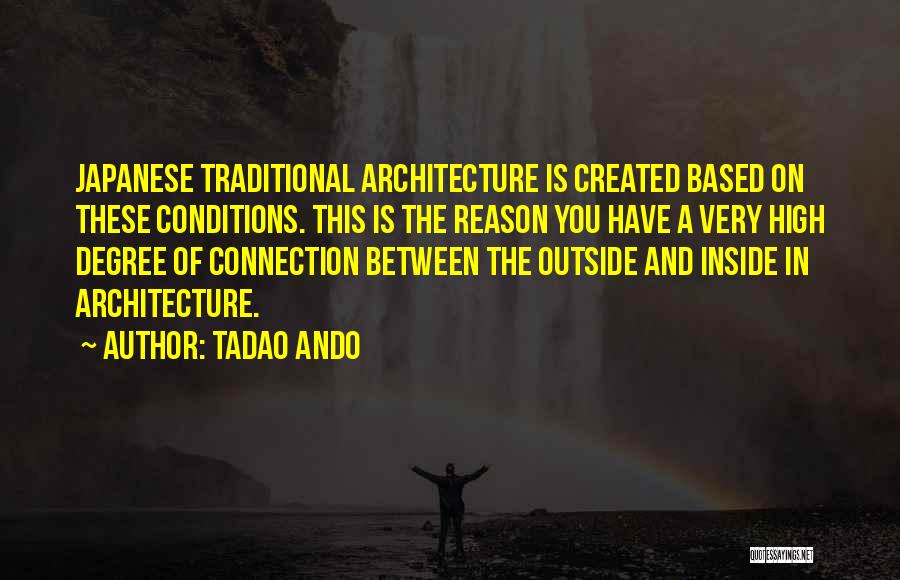
Japanese traditional architecture is created based on these conditions. This is the reason you have a very high degree of connection between the outside and inside in architecture. — Tadao Ando

We have almost all had the experience of gazing at the full moon. But those of us who are neither astronomers nor astronauts are unlikely to have scheduled moongazing appointments. For Zen Buddhists in Japan, however, every year, on the fifteenth day of the eighth month of the traditional Japanese lunisolar calendar, followers gather at nightfall around specially constructed cone-shaped viewing platforms, where for several hours prayers are read aloud which use the moon as a springboard for reflections on Zen ideas of impermanence, a ritual known as tsukimi. Candles are lit and white rice dumplings (tsukimi dango) are prepared and shared out among strangers in an atmosphere at once companionable and serene, a feeling thereby supported by a ceremony, by architecture, by good company and by food. — Alain De Botton

Cleaning is considered a vital part of the training process in all traditional Japanese disciplines and is a required practice for any novice. It is accorded spiritual significance. Purifying an unclean place is believed to purify the mind. — Mineko Iwasaki

Manga uses Japanese traditional structures in how to teach the student and to transmit a very direct message. You learn from the teacher by watching from behind his back. The whole teacher-master thing is part of Asian culture, I think. — Takashi Murakami

After World War II great strides were made in modern Japanese architecture, not only in advanced technology, allowing earthquake resistant tall buildings, but expressing and infusing characteristics of traditional Japanese architecture in modern buildings. — Harry Seidler

Tokyo in the late 1960s seemed to be like one of the futures that science fiction presents. Here was the proto- super-technology of the future, electronically, robotically, blahblahblah, intercut with traditional Japanese cultural patterns, Shinto patterns. — Ian Watson

Regarding R. H. Blyth: The first book in English based on the saijiki is R. H. Blyth's Haiku, published in four volumes from 1949 to 1952. After the first, background volume, the remaining three consist of a collection of Japanese haiku with translations, all organized by season, and within the seasons by traditional categories and about three hundred seasonal topics. — Reginald Horace Blyth

47 Ronin is a very special movie for me. Not only a Samurai thing. Not only a Hollywood fantasy. It has a very special mixture between Japanese traditional culture and Western culture for the costume, set, story. Everything. I believe it will be a very special film that no one has ever seen. — Hiroyuki Sanada

When you look at Japanese traditional architecture, you have to look at Japanese culture and its relationship with nature. You can actually live in a harmonious, close contact with nature - this very unique to Japan. — Tadao Ando

Traditional Chinese art looked at the Earth from a Confucian mountain top; Japanese art looked closely around screens; Italian Renaissance art surveyed conquered nature through the window or door-frame of a palace. For the Cro-Magnons, space is a metaphysical arena of continually intermittent appearances and disappearances. — John Berger
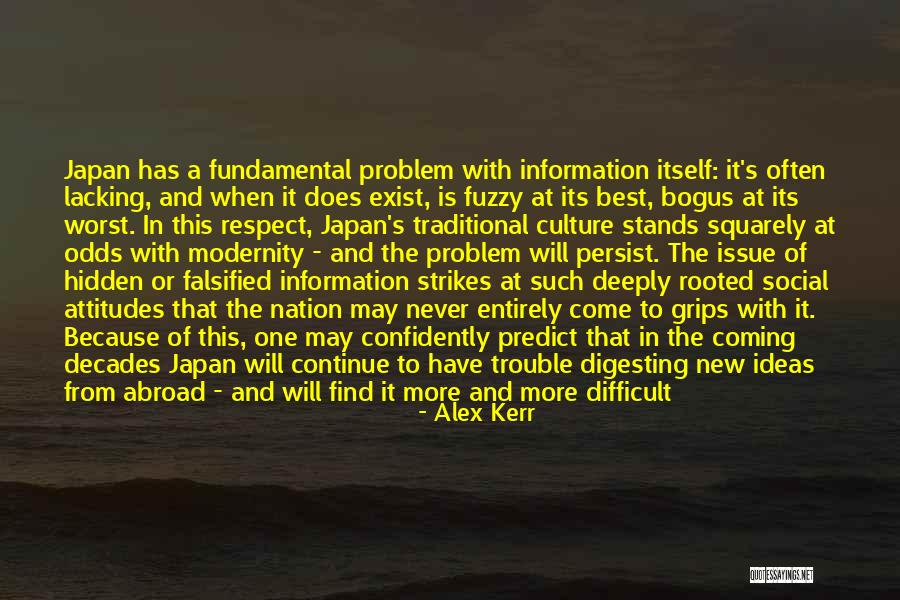
Japan has a fundamental problem with information itself: it's often lacking, and when it does exist, is fuzzy at its best, bogus at its worst. In this respect, Japan's traditional culture stands squarely at odds with modernity - and the problem will persist. The issue of hidden or falsified information strikes at such deeply rooted social attitudes that the nation may never entirely come to grips with it. Because of this, one may confidently predict that in the coming decades Japan will continue to have trouble digesting new ideas from abroad - and will find it more and more difficult to manage its own increasingly baroque and byzantine internal systems. — Alex Kerr

There are also a number of humans living up there (Canada), and in many ways they have a lifestyle quite similar to ours, including such traditional American activities as driving Japanese cars. — Dave Barry

There is an unspoken feminist layer to Katana. She's an aggressive modern woman with traditional Japanese roots. She was in love with her sword because she believed it contained her husband. — Ann Nocenti
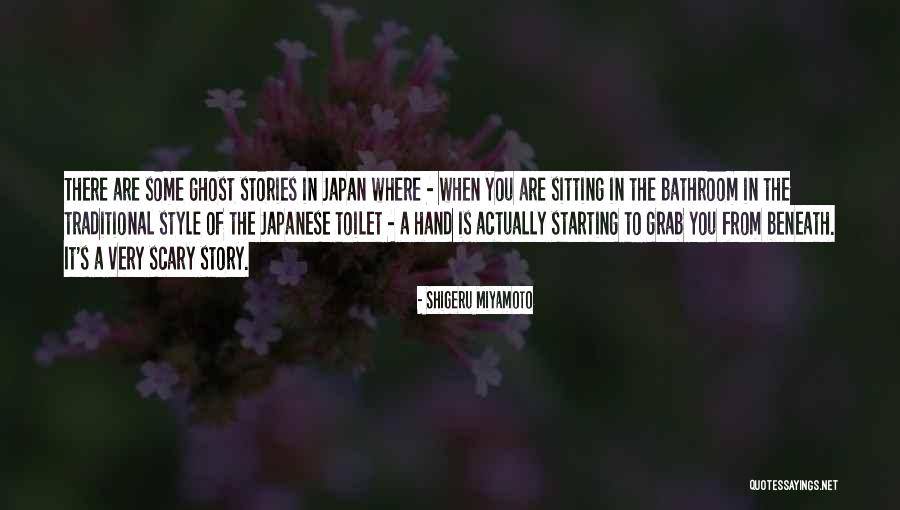
There are some ghost stories in Japan where - when you are sitting in the bathroom in the traditional style of the Japanese toilet - a hand is actually starting to grab you from beneath. It's a very scary story. — Shigeru Miyamoto

P R E S I D E N T Y O S H I D A'S T E N S P A R T A N R UlE S Hideo Yoshida's quest for management excellence was no doubt driven by his visions for Japanese marketing and media, but also by an overall worry about Japan's economic prospects after World War II. As a result, he developed a set of business and work principles, or rules, which he called the "Ten Spartan Rules": difficult work.5. Once you begin a task, complete it. Never give up.6. Lead and set an example for your fellow workers.7. Set goals for yourself to ensure a constant sense of purpose.8. Move with confidence. It gives your work force and substance.9. At all times, challenge yourself to think creatively and find new solutions.10. When confrontation is necessary, don't shy away from it. Confrontation is often necessary to achieve progress. These traditional work rules still guide Dentsu's employees, and are carried around in their notebooks — Anonymous
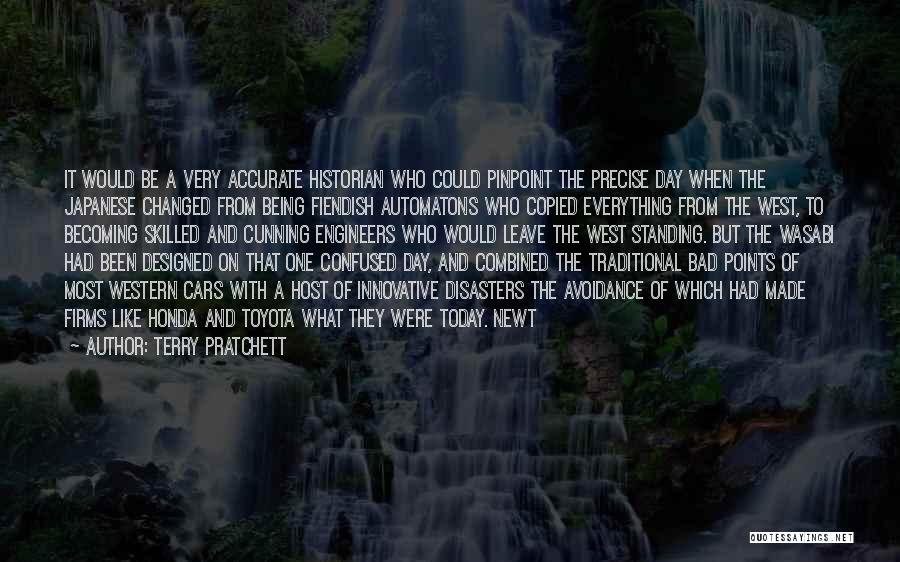
It would be a very accurate historian who could pinpoint the precise day when the Japanese changed from being fiendish automatons who copied everything from the West, to becoming skilled and cunning engineers who would leave the West standing. But the Wasabi had been designed on that one confused day, and combined the traditional bad points of most Western cars with a host of innovative disasters the avoidance of which had made firms like Honda and Toyota what they were today. Newt — Terry Pratchett






